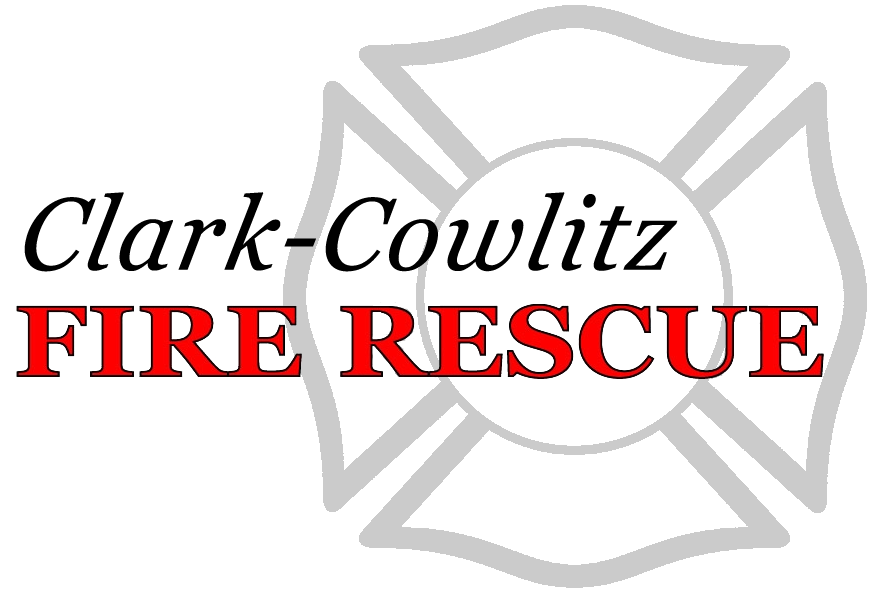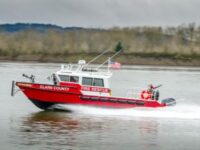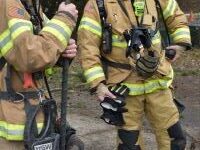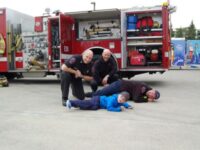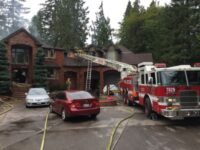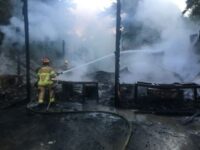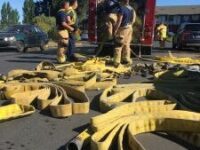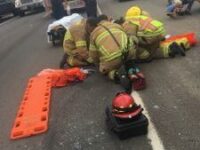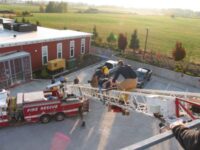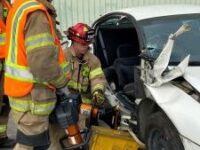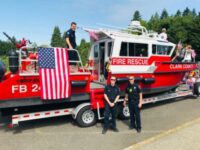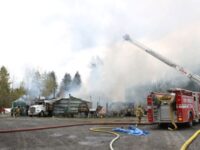EMS
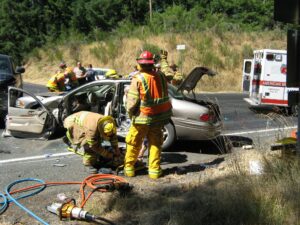
Clark-Cowlitz Fire Rescue provides Advanced Life Support (ALS) and Basic Life Support (BLS) services to the cities of La Center, Ridgefield and Woodland Washington – as well as the surrounding Clark and Cowlitz County communities located between the four cities. Every Clark-Cowlitz Fire Rescue Firefighter is cross trained to a minimum level of Emergency Medical Technician–Basic (EMT-B). EMT-B’s are capable of administering Basic Life Support skills to the sick and injured, utilizing procedures such as:
- Automatic External Defibrillators in the setting of cardiac arrests
- CPR and Oxygen therapy
- Basic medications such as oral glucose and epinephrine
- Basic trauma care and wound management
- Child birth / delivery
- Approximately 140+ hours of clinical training to become a certified EMT-B

Working alongside the EMT-B’s, Clark-Cowlitz Fire Rescue also utilizes Firefighter / Paramedic staffing to deliver Advanced Life Support to the more critically sick or injured citizens we serve. Paramedics are the most advanced level of pre-hospital care available, capable of utilizing procedures such as:
- Advanced oxygen therapy and airway control (intubation)
- Delivery of over 30 different pre-hospital medications for the treatment of cardiac arrests, allergic reactions, overdoses, respiratory illnesses, heart attacks, stroke, narcotic pain control, and more
- Surgical procedures such as cricothyroidotomy and pleural decompression
- EKG interpretation and advanced cardiac care – including the ability to actively alter a patient’s cardiac output by utilizing both cardiac medications and manually controlled electrical shocks
- Intravenous (IV) therapy for the administration of both fluids and medications
- Approximately 1200+ hours of clinical training to become a certified Paramedic
All career staffed Clark-Cowlitz Fire Rescue apparatus are equipped with ALS supplies. We also alter our Paramedic staffing in an attempt to best spread out the ALS coverage to as many of our citizens as possible, for each given shift. ALS equipped apparatus include:
- Tower 21: Ridgefield Junction
- Engine 22: Charter Oak
- Engine 23: Downtown La Center
- Engine 26: Dollar’s Corner
- Engine 29: Woodland

All other Clark-Cowlitz Fire Rescue apparatus are equipped with BLS supplies. This may include volunteer staffed fire engines, reserve engines, brush rigs, ambulances, rescue boats, and special response units – such as ATVs and bicycles.
Hazardous Materials

Incidents involving hazardous materials are becoming more and more prevalent. All Clark-Cowlitz Fire Rescue firefighters are trained to the Haz Mat Operations level and all officers are trained to the Haz Mat Incident Command level. This level of specialized training is sufficient to handle the vast majority of Haz Mat incidents in the Clark-Cowlitz Fire Rescue service area. However, occasionally we are faced with a Haz Mat incident or spill that requires technical expertise. In those rare instances, the Vancouver Fire Department Hazardous Materials Team is asked to respond and assist. Significant Haz Mat incidents require technical expertise and are relatively rare. Additionally, the training required to train and maintain personnel at the Haz Mat Technician level is very expensive. As such, very few departments in the state of Washington maintain Haz Mat Teams. Clark-Cowlitz Fire Rescue, along with all other fire agencies in the county, entered into an interlocal agreement with Vancouver Fire several years ago to utilize its Haz Mat Team on an as needed basis. Depending of the size of the incident and the material involved, the Vancouver Haz Mat Team will provide assistance. That assistance can be as simple as a phone call to the Incident Commander at the scene to answer questions or provide technical information or it could be a full response of vehicles, equipment and technicians to the scene.While the basic cost of the regional Haz Mat Team is provided by Vancouver Fire, much of the specialized equipment and support for the team is through Homeland Security grants. Additionally, state law allows for cost recovery for hazardous material spills. As with most of the other specialized teams, the Vancouver Haz Mat Team will respond anywhere in Southwest Washington.
Marine Division

Clark-Cowlitz Fire Rescue supports the Marine Division as part of its Special Operations function to respond to waterborne and waterfront emergencies. The division has specialized equipment, with trained personnel assigned to provide rapid response capabilities to a variety of water-based incidents. The department maintains a fireboat and other support boats to provide fire, rescue, and emergency services within our 43 river mile jurisdiction on the Columbia River, Lake
River & North & East Forks of the Lewis River. The division works closely with local and state agencies under mutual aid agreements to support rapid responses on the Columbia River. Each agency works in partnership to provide adequate, efficient, and effective resources to any waterway incident.
Technical Rescue Team

The Technical Rescue Team is called to assist regular crews with more complicated incidents. High-angle rescue, confined space rescue, trench rescue, and swift water rescue are just a few examples of situations that may arise in which our regular crews need additional assistance. The County’s first Technical Rescue Team (TRT) was formed in 1996 with donations of a heavy rescue truck from Clark Public Utilities and equipment donated by a number of businesses and community members in the greater Hazel Dell area. Coordinated by Fire District 6 in Hazel Dell, the TRT solicited help from a number of other fire departments including Clark-Cowlitz Fire Rescue. The team evolved over the years into a group of highly trained individuals made up of members from Clark-Cowlitz Fire Rescue and Fire Districts 3 and 6.

In 2005, the County TRT consolidated training and operations with Vancouver Fire’s TRT. Homeland Security grants have provided additional equipment that allows the team to expand their scope of rescue to a possible terrorist incident. Members have also had the opportunity for advanced training in urban search and rescue as well as structural collapse rescue techniques. The TRT is asked to respond to incidents in Clark, Cowlitz, Skamania, and Wahkiakum counties. The consolidated regional team is now comprised of 30 firefighters.
